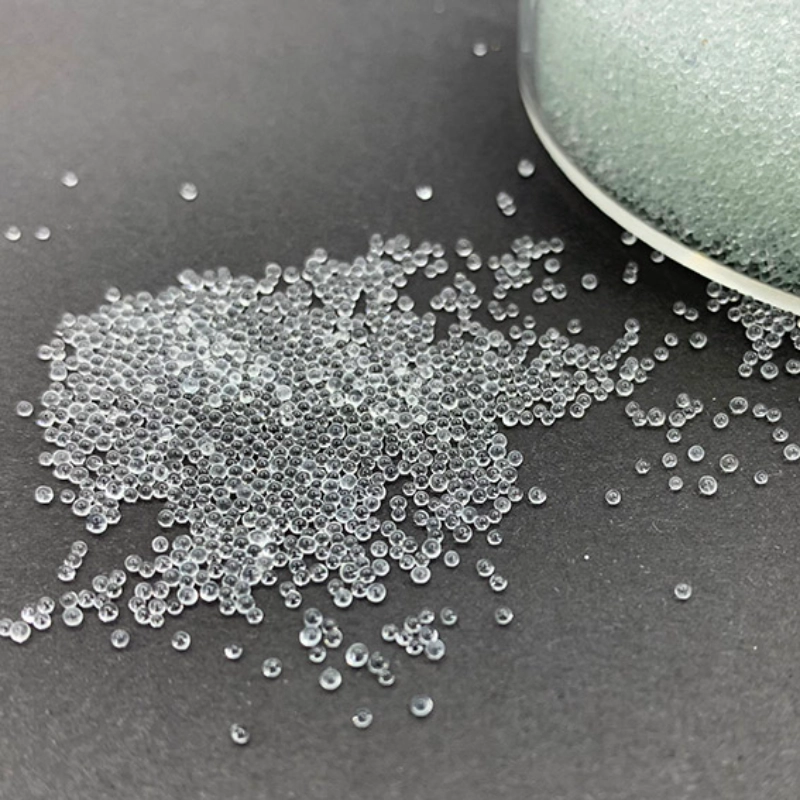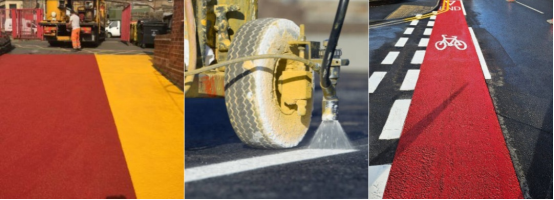Impact of Glass Bead Settling Depth on the Retroreflectivity of Road Markings
2025-08-01
Glass beads, as an essential part of road marking materials, play a significant role in traffic safety, particularly in enhancing road marking visibility both during the day and at night. The glass beads improve the retroreflectivity of road markings, especially under night-time or rainy conditions. Recent studies have shown that the settling depth of glass beads is closely related to the retroreflectivity (reflective performance) of road markings, which directly affects the functionality and durability of the markings.

1、Definition and Influence of Glass Bead Settling Depth
The settling depth of glass beads typically refers to how deeply the beads settle within the road marking coating. During the application of liquid road marking paint, glass beads are mixed with the paint, and over time, some beads will settle and be covered by the coating, while others remain exposed on the surface. When the settling depth of the glass beads is shallow, most of the beads stay near the surface of the coating, allowing them to better reflect vehicle headlights, thus improving retroreflectivity and visibility. However, if the road marking glass beads settle too deeply, they become covered by the paint, significantly reducing their reflective performance and causing the road marking’s visibility to decrease.
2、Factors Affecting the Retroreflectivity of Road Markings
The retroreflectivity of road markings refers to their ability to reflect vehicle headlights. The reflective performance of reflective glass beads depends on factors such as the beads size, surface smoothness, refractive index, and settling depth. Ideally, glass beads should be exposed on the surface of the coating to maximize the reflection of light. However, when the beads settle too deeply and become covered by too much coating, their ability to reflect light diminishes, leading to a decline in retroreflectivity.
3、Research on the Relationship Between Glass Bead Settling Depth and Retroreflectivity
Numerous studies have shown that the settling depth of glass beads has a significant impact on the retroreflectivity of road markings. If the glass beads settle too deeply during the application of road markings, the reflective performance is limited, and the angle at which light is reflected changes. This results in a substantial decrease in the visibility of road markings, particularly under low light conditions or at night. Therefore, controlling the settling depth of glass beads is a critical factor in ensuring the reflective performance of road markings.
Moreover, different types of road markings, such as thermoplastic and cold-applied markings, exhibit varying settling behaviors of glass beads. In thermoplastic markings, the paint is more viscous, which prevents the beads from settling easily, while in cold-applied markings, the coating’s fluidity allows the beads to settle more deeply. This suggests that different road marking types require specific strategies for controlling the settling of glass beads to ensure optimal retroreflectivity.
4、Conclusion and Recommendations
In conclusion, the settling depth of glass beads is closely related to the retroreflectivity of road markings. To ensure the reflective performance of drop on glass beads during nighttime or adverse weather conditions, it is essential to control the settling depth of glass beads during the application process. By using appropriate design and construction methods, glass beads can be kept mostly exposed on the surface, maximizing their reflective performance and enhancing road safety. Additionally, different types of road markings require distinct strategies for controlling glass bead settling to ensure optimal performance under various conditions.
| Factor | Description |
| Glass Bead Settling Depth | The settling depth of glass beads refers to the extent to which the beads settle into the road marking paint, determining how much of them is exposed on the surface. |
| Impact of Shallow Settling Depth | When the glass beads settle shallowly(properly), most of the beads are exposed on the surface, reflecting headlights to the greatest extent, thus enhancing retroreflectivity during nighttime or rainy conditions. |
| Impact of Deep Settling Depth | If the beads settle too deeply, many are covered by the paint, reducing their ability to reflect light, leading to a decrease in the visibility and retroreflectivity of the road marking. |
| Retroreflectivity | Retroreflectivity refers to the ability of road markings to reflect vehicle headlights in low-light conditions. The retroreflectivity is closely related to the settling depth of the glass beads. |
| Other Factors Affecting Retroreflectivity | 1. The size, surface smoothness, and refractive index of the glass beads. 2. The type of paint used, such as hot-melt or cold paint, which affects the settling depth of the glass beads. |
| Differences Between Hot-melt and Cold Paints | In hot-melt paints, the paint is more viscous, so glass beads do not settle easily; in cold paints, the paint has better fluidity, allowing the beads to settle more easily. |
| Need for Controlling Bead Settling | To ensure the retroreflectivity of road markings, it is essential to control the settling depth of the glass beads, ensuring most beads remain exposed on the surface of the paint. |
| Optimization Suggestions | 1. Use appropriate design and construction methods to ensure that most of the glass beads remain exposed. 2. Adopt different bead settling control strategies based on the type of paint used. |


